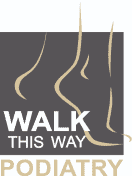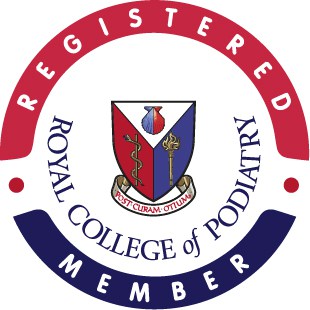Lunula Laser is a cutting-edge technology to treat toenail fungus or onychomycosis. It is a non-invasive, pain-free laser treatment that uses a unique combination of low-level laser light and low-frequency sound waves to kill the fungus and stimulate the growth of healthy nails.
But what is fungus exactly, and how can it affect your nails?
Fungus is a primitive organism — think of mushrooms, mould, yeast, and mildew — that lives in the air, soil, plants, and water. As such, fungus is common in most people’s everyday environment. What’s more, most people have it on their skin, too, yikes! So it’s easy to spread around.
The fungus found in the human body can be helpful or harmful. Hence, a fungal infection occurs when a harmful type of fungus takes over an area or organ in your body, and your immune system is unable to fight it. Harmful fungi can be difficult to kill, as they can survive in the environment and re-infect your body again and again if not treated successfully.
Two areas typically affected by fungal infections are your skin and nails.
A fungal nail infection, aka Onychomycosis, can develop in your fingernails or toenails. However, toenails are much more likely to get it as fungi love to proliferate in dark, warm and moist environments. If you get a fungal nail infection, you might notice that your nails turn thicker, are slightly discoloured, and may even start to become loose.
Small cracks in your toenail or the surrounding skin can allow the fungal germs to enter the nail when exposed to the fungus and cause an infection. When this happens, the spores of a fungus spread between your toenail and the skin underneath the nail bed and live off of the skin or the keratin in the nail.
While fungal nail infections can happen to anyone, age and certain health conditions can present higher risks to develop them.
So what causes fungal nail infections?
Onychomycosis is the most common cause of disease in toenails and occurs in 10% of the population.
Because fungi are highly contagious, it’s the type of infection that you can easily contract by simply exposing your feet to a contaminated environment or from being in direct contact with an infected person.
Some of the most common causes that lead to developing nail fungus are:
- Age. Nail fungus is more likely to affect older adults who are over 60. This is simply due to the natural wear and tear of the body that results from the ageing process, which affects blood circulation and cell renewal. As you grow older, nails start growing more slowly, which hinders the production of new skin cells and slows down their ability to replace the infected ones. In addition, your immune system weakens, making the recovery of the condition a lot harder, as it has less strength to fight the infection and prevent it from reoccurring.
- Frequently walking barefoot in places where fungus lives and can spread quickly, such as communal showers and swimming pools, locker rooms in gyms, etc.
- Wearing heavy shoes with poor ventilation that cause your feet to get hot and sweaty.
- Having regular pedicures in nail bars with poor hygiene. Toenail fungus can be transferred through nail files and clippers, so you can catch it in a salon where the tools haven’t been sanitised after being used.
- Some chronic health conditions, such as diabetes, psoriasis, the human immunodeficiency virus (HIV), peripheral arterial disease, or any other illness that may compromise your immune system or interfere with blood flow to your toes.
- If you have caught Ahlete’s Foot from walking barefoot in a fungi-contaminated environment or having shared towels, sheets, clothing, or shoes with someone who has Athlete’s Foot, the infection can spread to your nails causing fungal nail infection.
As a preventative measure, always make sure you check your feet for any abnormalities daily so that you can spot them early and treat them before they worsen.
You can reduce the risk of developing nail fungus by keeping good foot hygiene, wearing clean socks and breathable shoes every day, not sharing clippers or scissors with other people, and wearing flip flops or swimming shoes in communal showers or changing rooms. And remember, fugal nail conditions are very unlikely to disappear when treated with over the counter creams and lacquers. Nail fungus is a stubborn condition and hence best treated by a professional Podiatrist. This will ensure it gets completely eradicated in the shortest possible time.
How does Lunula laser work?
The Lunula Laser treatment involves the use of two laser applicators, which emit low-level laser light and low-frequency sound waves. The laser light penetrates the nail and kills the fungus, while the sound waves stimulate the immune system and promote the growth of healthy nails. The treatment takes around 30 minutes, and most patients require four sessions, spaced one week apart, to achieve the desired results.
One of the biggest advantages of the Lunula Laser treatment is that it is painless. Unlike traditional treatments, which can cause discomfort and pain, the Lunula Laser treatment is completely pain-free. Patients do not need to take any medication or undergo anaesthesia, and they can resume their normal activities immediately after the treatment.
Another advantage of the Lunula Laser treatment is that it is effective. Clinical studies have shown that the Lunula Laser treatment can eliminate toenail fungus in over 90% of patients. This is significantly higher than traditional treatments, which have a success rate of around 50%. The Lunula Laser treatment is also very safe. The low-level laser light used in the treatment does not produce any heat, and there is no risk of burning or damaging the surrounding tissue. The treatment is suitable for all skin types and does not have any known side effects.
Overall, the Lunula Laser treatment is an innovative and effective solution for toenail fungus. It is painless, safe, and convenient, with a high success rate and no known side effects.
If you are suffering from toenail fungus, the Lunula Laser treatment is definitely worth considering. Contact us to book your appointment.








